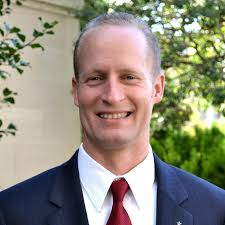Agencies, generally speaking, have little idea what it costs to provide technology or human resources or acquisition or financial management services to the rest of the agency.
Yes, most know how many employees and contractors work in those areas and what they cost. But few have ever developed an accurate cost model that includes the cost of the building or electricity or air conditioning or the guards that protect the building.
One of the main reasons the competitive sourcing effort under Circular A-76 struggled during the administration of President George W. Bush was the inability — or unwillingness — for agencies to truly figure out the costs of these back-office services. And when they did, contractors claimed the figures were way out of whack.
The Food and Drug Administration may have just broken the code around cost allocation and recovery for IT services.
FDA Chief Information Officer Todd Simpson said April 5 at the Power Players Summit, sponsored by 1105 Government Information Group, that his office is maturing a charge-back model for the mission areas.
“It’s one of the best ones I’ve ever seen in both the public and private sectors,” Simpson said. “It’s still light and we are flushing that out now by refining cost drivers and refining service-level agreements. We don’t have them with the customer right now, but we are developing service-level agreements across all lines of services.”
The idea of understanding what it costs for the CIO’s shop to provide services for the mission is intriguing, especially as the Trump administration is signaling a push for reducing spending on back-office and administrative functions.
Simpson said most CIO organizations “charge” a flat fee to all mission areas to pay for technology. But what happens many times is one mission area uses the technology, say 80 percent of the time, but is only playing 10 percent of the costs.
Under FDA’s approach, Simpson’s office will monitor and measure which mission area is using what hardware or software and then send them a bill — similar to how your electricity or water bills come at home.
“The IT Cost Allocation Model categorizes all enterprise activities into a set of IT services. Costs are associated to business units according to a set of cost drivers which assign costs to each business unit based on relative usage,” Simpson said by email. “The model is organized into seven parent categories with a total of 30 services and 30 cost drivers.”
For instance, under the infrastructure parent category, component offices are charged for email, IT security and data center services.
Under the enterprise IT applications parent category, the CIO’s office charges for business intelligence and reporting application services, document management application services and for collaboration management application services.
“My customers have budgetary authority so I listen to them and spin up new services as they need it,” Simpson said. “This cost approach will serve us well, especially with respect to budget cuts. My business is there to enable the FDA mission.”
One example of this came in the form of a choose-your-own-device (CYOD) approach for mobile devices. Simpson said instead of either limiting choice or having a free-for-all across the FDA, mission areas make their case for what types of smartphones or tablets they need, and his staff will identify standards the devices must meet. If it’s approved, Simpson said a tech expert from his office will get the device deployed within two days.
Simpson said the benefits so far include:
- Increased transparency by helping better understand IT costs and usage of services;
- Greater accountability because it provides more accurate service costs and aligns business units charges to actual usage;
- Improved Efficiency by providing the agency better measures of usage and costs to encourage optimization of services.
The FDA plans to further evolve the cost model. Simpson said it plans to improve data accuracy and integrity by implementing system monitoring software to gauge usage and refine standard procedures and processes to get more bang for the buck.
Additionally on the customer side, Simpson said his office is working with the mission areas to better manage expectations through the service level agreements and further refine key performance indicators to ensure the mission areas are getting what they need in a timely manner.
The FDA’s cost allocation effort coincides with a governmentwide initiative by the CIO Council to give agencies a process to measure the value of IT investments instead of just the outcomes. The council has piloted the Technology Business Management (TBM) approach at agencies including the General Services Administration.
The Commission on IT Cost, Opportunity, Strategy and Transparency (COST) recommended earlier this summer that agencies could use TBM to help drive consistency across how agencies report IT spending. The commission made 21 recommendations to help agencies save more than $5.8 billion in IT spending.
As budgets continue to get tighter, the FDA’s “electricity” approach to providing IT services is one others should take a closer look at.
Copyright
© 2024 Federal News Network. All rights reserved. This website is not intended for users located within the European Economic Area.
